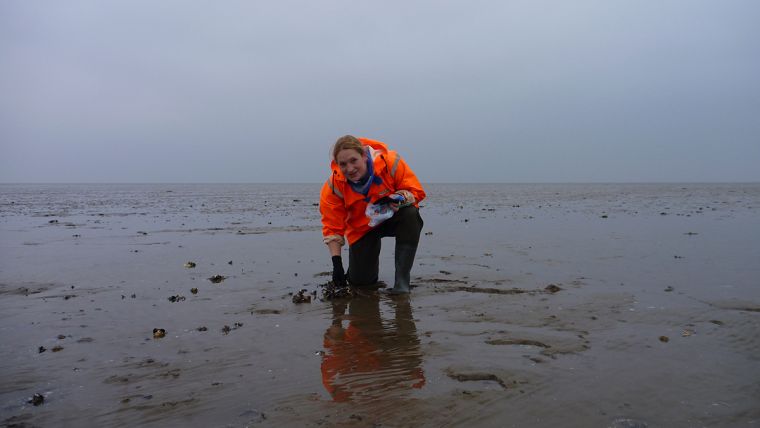What Can Sea Animals Teach Us About Viruses?
A variety of sea animals can take up virus particles while filtering seawater for oxygen and food. Sponges are particularly efficient, wrote marine ecologist Jennifer Welsh from the Royal Netherlands Institute for Sea Research (NIOZ) this week in a publication in Scientific Reports.
“When a virus infects a cell”, says Jennifer Welsh, “it uses its host to make new viruses. When these are released, they can, in turn, infect many more new cells.” However, Welsh discovered that the many virus particles in the sea – over 150 million in a glass of seawater – can also end up for a large part as the lunch of a diverse group of sea animals.
Filtering Viruses
The Japanese oyster, for example, filters seawater to extract oxygen or food such as algae and bacteria. While doing this, it ingests virus particles. Welsh: “In our experiments, during which we did not offer the oysters any food and hence they only filtered the water for oxygen uptake, Japanese oysters removed 12% of the virus particles from the water.”
That number puts the oyster in the fourth place of all species that Welsh looked at in the NIOZ Virus Ecology Lab on Texel. “Of all non-host organisms that we tested, sponges, crabs and cockles made it to the podium. In our experiments, the sponges reduced the presence of viruses by up to 94% within 3 hours. Another experiment showed that the uptake of viruses happens very quickly and effectively: even when we introduced new viruses to the water every 20 minutes, the sponges remained tremendously effective in removing viruses.”
An Entirely New Factor in Virus Ecology
Until now, it was unknown that several species of sea animals can have such a significant influence on virus populations. “The influence of non-host organisms in the ambient environment really is a factor that has been overlooked in virus ecology”, Welsh says.
However, Welsh does not assume that the results of her lab experiments will be so clear cut when applied to the natural habitat. “The situation there is much more complex, as many other animal species are present and influence one another. For example, if an oyster is filtering and a crab comes along, the oyster closes its valve and stops filtering. In addition, there are factors such as tidal currents, temperature and UV light to consider. Even so, predation by non-hosts should definitely be taken into account in nature.”
Useful in Aquaculture
The new insights might in time be useful in aquaculture. In this sector, fish or shellfish that are meant for consumption are kept in enclosures such as sea cages or basins, with a direct connection to the sea. Aquaculture is increasing as a sustainable alternative to fishing at sea but is much criticized, mostly by nature conservationists.
Welsh explains why: “In saltwater farms, huge numbers of specimens of a single species live together in a monoculture. If a contagious disease breaks out, there is a high risk that the pathogen will spread to wild populations living in the sea. With the addition of enough sponges, the danger of a virus outbreak could possibly be nipped in the bud. The results of this research show that this would be good follow-up research project.”
Online Defence
On Monday 30 March, Jennifer Welsh was the first NIOZ researcher to defend her dissertation on the internet, in the middle of a crisis caused by COVID-19. "A coronavirus that, by now, we all know and have been affected by", she said. Due to the imposed restrictions, she answered the questions of the committee online.
Publication Source
Jennifer E. Welsh, Peter Steenhuis, Karlos Ribeiro de Moreas, Jaap van der Meer, David W. Thieltges and Corina P.D. Brussaard: Marine virus predation by non-host organisms. Scientific Reports 10, 5221 (2020), DOI https://doi.org/10.1038/s41598-020-61691-y














